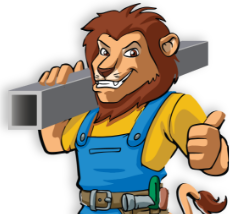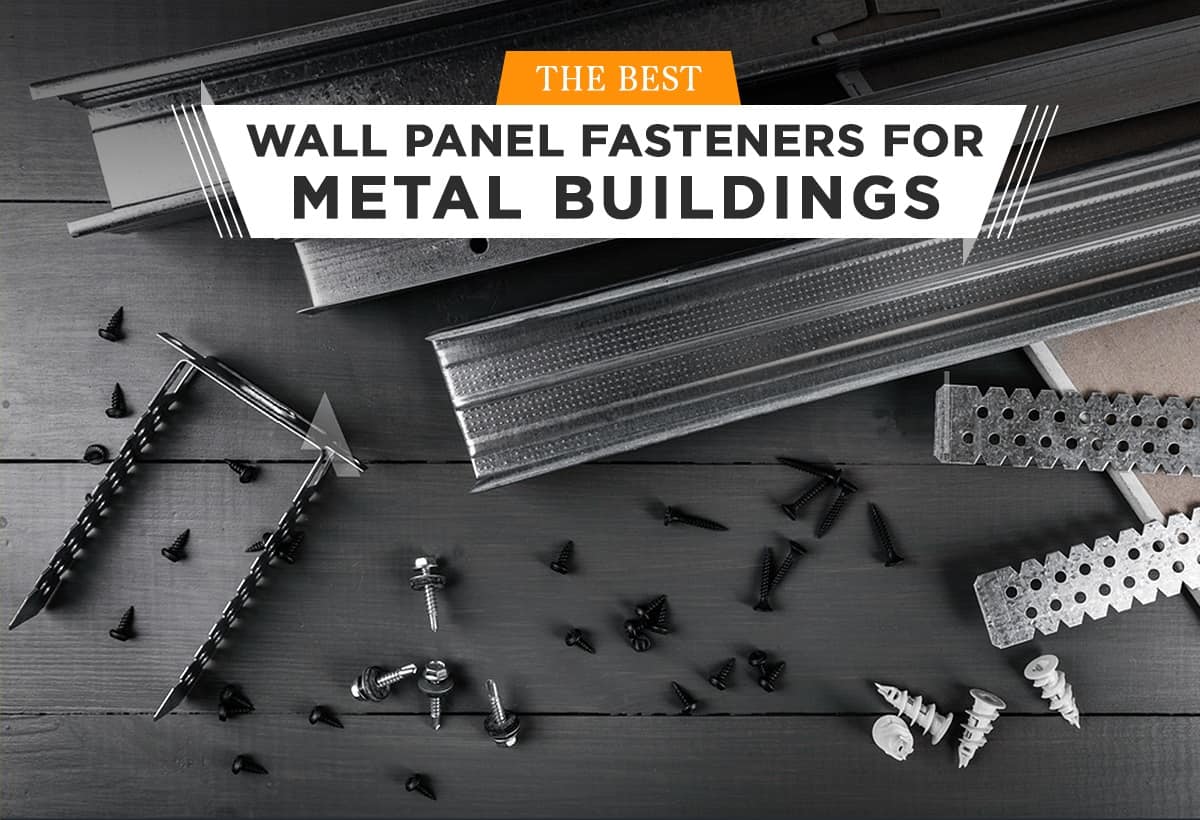The Best Wall Panel Fasteners for Metal Buildings


Are you working on designing a metal building? If so, you need to know the difference between exposed and concealed fasteners and what that might mean for your building’s longevity and ability to withstand harsh weather. There are cost and style differences, as well as differences in how the two types will function in certain situations.
Four major factors must be considered when you choose a fastener:

Exposed fasteners attach metal panels similarly to through-fastened roofing. Each panel is between two and four feet wide and is connected directly to the steel structure’s frame supports. The fastener locks the panels into place by going through each panel in the overlapping sections. This is held in place by a washer and sealant, which also provides a barrier to prevent any seepage. The head of the fastener is still visible after installation giving it the name “exposed fastener.”
Exposed fastener wall panels are considered less aesthetically pleasing in most cases, although they are lower cost than concealed fasteners. Thus, they tend to lend themselves well to industrial and agricultural settings where aesthetics are not a priority. They are also quicker and easier to install, so they are an excellent solution for simple metal buildings installed by laymen. They also tend to be easier to use with a vertical panel. To successfully use them when installing a horizontal panel, we advise using a panel with deep ribs.
You should consider that exposed fasteners do pierce the panel, making the panel susceptible to leaks, and if they are too tight, they could dimple or bend the panel. It is also essential to consider that as temperatures fluctuate, the panel may slot around, causing the fastener to loosen and even leak. Because no matter the installation or care, metal fatigue will eventually set in. These types of fasteners must be inspected regularly to ensure their replacement before cracks occur that can make the panel susceptible to failure under wind loads.

Concealed fastener panels usually lock in place with a snap-lock joint. The panels are attached together by clips inside the interlocking panel joints, which protect them from the elements, such as harsh weather conditions, and keep them from being visible. Wall panels installed with concealed fasteners are more secure than exposed fasteners, and they are generally considered more aesthetically pleasing. This makes their use more common in residential and commercial steel buildings.
One of the main advantages of using this method is that concealed fastener wall panels are simple to install or replace when necessary. Another advantage is that the clips used in concealed fasteners allow some give, which means that there is no concern with metal fatigue or torn fastener holes. Another great thing about concealed fasteners is their versatility. They can be used on lumber, plywood, cold-formed Cee and Zee sections, hot-rolled beams, concrete, and masonry.
The only major drawback of concealed fasteners is that they are more expensive. This is because the panels often have less width, which will require more skill, time, and materials to install.
If a similar metal is not used for fasteners and panels, it can cause a galvanic reaction and affect material performance over time. Fasteners are made of different types of materials and also come in different shapes.
These are some of the most common:
Galvanized: Some fasteners are galvanized to prevent rust, but these will be a little more expensive.
Carbon Steel: The most common material for fasteners is carbon steel because it is inexpensive and performs well. Exposed fasteners made of carbon steel are often self-drilling or made with self-tapping points.
Hexagonal: Fasteners with a hexagonal shaped head do not easily strip, and they can be used as either exposed or concealed fasteners.
Pancake: Pancake screws are flat and are used with concealed fastener panels because they take less space.
Both exposed and concealed fasteners work well. Generally, exposed fasteners are used in settings where appearance and weather are not primary concerns. Concealed fastener panels have a higher upfront cost, but require less maintenance. They also provide more security and a better appearance.
The most important thing is to use the correct fasteners for your steel building. Steel Carports, America’s top dealer of metal buildings, can help you make an informed decision about which fasteners will work best with the prefab building you want to install.
Their team of experts is here to help you through every step of the process, from consultation to maintenance. Call Steel Carports today at +1 (833) 647-8335 for more details on how you can get started with a metal building of your own!
Let our experts help you get the steel building you need.